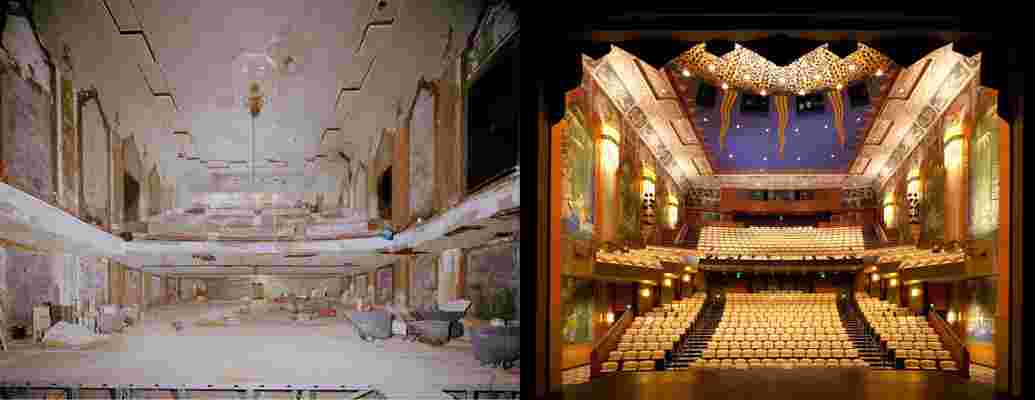In a city where nondescript luxury condos pop up on every corner, it's rare that historic buildings are revitalized to their original glory. But now, the restoration of three Boston theaters that fell into disrepair by the 1960's and '70's is getting the attention it deserves: Last week, the National Trust for Historic Preservation released their list of 11 once-endangered sites that are now thriving and contributing to their communities, and a trio of historic Boston theaters- the Boston Opera House, the Paramount Theatre, and the Modern Theatre- scored a spot on the list. The inclusion of the Boston theaters is a major coup for the the Boston Preservation Alliance, who tirelessly advocated for the theaters through building public and government support, as did the late Boston Mayor Thomas Menino.
Known as the epicenter of Boston nightlife during the Jazz Age, each the theaters had fallen into neglect as the neighborhood evolved into the Combat Zone. Flush with adult movie theaters and peep shows, the stretch of Washington Street became synonymous with crime and prostitution. By then, the Modern Theatre was no longer the lavish palace it was in the early 20th century, when it was the first theater in Boston to show "talkie" films. But it fell into disrepair by the Combat Zone's heyday, and was even used to play adult films on occasion. It shuttered in 1981, only to be purchased and entirely restored by Suffolk University. It now contains the auditorium and a student dormitory.

The before (left) and after (right) images of Boston's Modern Theatre.
Overloading with opulence, the Boston Opera House was a vaudeville palace when it was built in 1928. By the late 1990's, that gilded beauty and glamour had fallen by the wayside. Now fully restored and used by the Boston Ballet and a constant stream of Broadway plays, the Opera House looks every bit the luxurious palace it once was.

An image of the historic Paramount Theater before the renovation (left), and after (right).
Built in 1932, the Paramount Theatre was once a shining example of art deco design. But by the time it shut down in 1976, the dilapidated space was overrun with asbestos. Now owned by Emerson College, the space houses everything from a residence hall and a 150-seat Black Box Theatre to a 170-seat screening room and rehearsal studios.

Leave a Reply